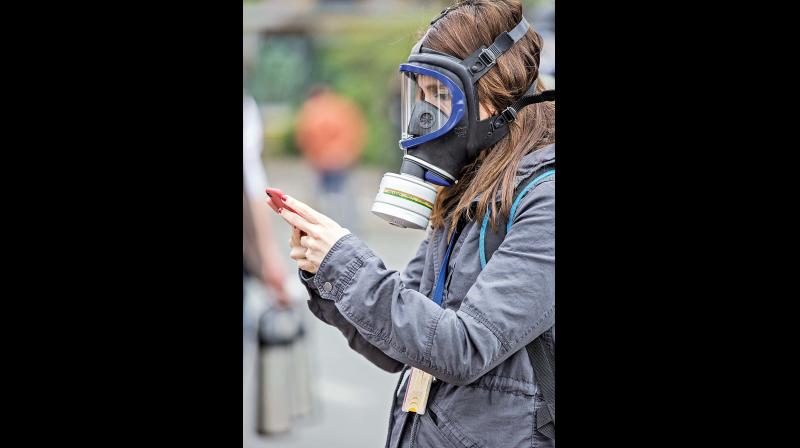Is your indoor air pure?

There is not a single major city where pollution is not an issue and the quality of air has degraded in the last few years. The outdoor air pollution is highly visible — thanks to the smog covering our skies. However, the bigger menace is indoor air pollution, which is relevantly invisible to the human eye. Fact: Indoor air can be up to ten times more polluted than outdoor.
A latest study reveals that India accounts for a quarter of deaths caused worldwide by most chronic respiratory diseases, and is majorly caused by smoking and air pollution. This is a serious problem, and with the lack of general awareness, people haven’t yet realised the gravity of the problem. Sudhir Pillai, General Manager, Homes, Honeywell Home and Building Technologies, India, helps debunk some myths around air pollution — outdoor versus indoors.
Wearing a surgical mask will protect you:
Minute suspended particles (measured in Particulate Matter or PM) are 30 times (PM2.5) smaller than the width of a human hair. PM2.5 triggers asthma and worsens heart conditions, while causing a runny nose, sneezing and coughing. Anti-pollution air masks do little to protect against these tiny particles.
Air fresheners, incense sticks, scented candles do not affect indoor air quality. One might be tempted to light an incense stick, burn a scented candle or use an air freshener when the air inside your home smells bad. But did you know that it is these products that contain harmful chemicals which are released in the air when burnt? Using these products on a daily practice lowers the air quality indoors exposing you and your family to long term health risks.
Air outdoors is more polluted than indoors:
The truth is far from it! According to WHO, air pollution — both outdoor and indoor — is the biggest environmental risk to health, carrying responsibility for about one in every nine deaths annually and 1.3 million people in India die as a result of indoor air pollution. In fact, recent studies have established that indoor air pollution as a bigger threat to our health than outdoors. The closed structure of our homes and buildings restricts free flow of fresh air indoors, resulting in poor indoor air quality.
Poor indoor air quality doesn’t harm you:
Indoor air pollution is up to 5-10 times worse than outdoor air pollution. Poor indoor air quality can actually hurt your health in many ways. Sinus congestion, nausea, headaches, and shortness of breath are often the result of poor indoor air quality. A recent research documents that long-term exposure to pollution causes stress hormones to spike and is associated with heart disease, stroke, diabetes, and a shorter life span.
Only those suffering from breathing ailments are affected:
Bad air affects all. Even healthy people can develop physical symptoms associated with poor air quality. One way to confirm that the air inside your home is causing ailments such as headaches, nausea, sinus, is if the symptoms go away when you step outside the house. Many of the pollutants inside house triggers allergies and asthma, therefore an air purifier will help provide the relief and will reduce the possibility of getting infected by clearing out these pollutants.
Air Purifiers are not worth the investment:
Selecting the right air purifier can be a daunting task as there are lot of products available today claiming to clean the air but do little to improve the indoor air quality. However, an air purifier with a quality High-Efficiency Particulate Air (HEPA) filter can contribute exponentially to improve the indoor air quality. Air purifiers today are extremely efficient in removing pollutants such as PM10, PM2.5, microscopic allergens, volatile organic compounds, pet hair, pet dander from the air inside a room. An air purifier is worth the investment!
It is a fact there is lagging awareness and regulation of health risks due to indoor air pollution, but, the good news is that our indoor environment is entirely controllable. We cannot do much about outdoor air pollution. In today’s age, it is best to be well informed about the problem, its adverse effects on the health, look for alternate ways to resolve, and take advantage of the technology available to address this.

